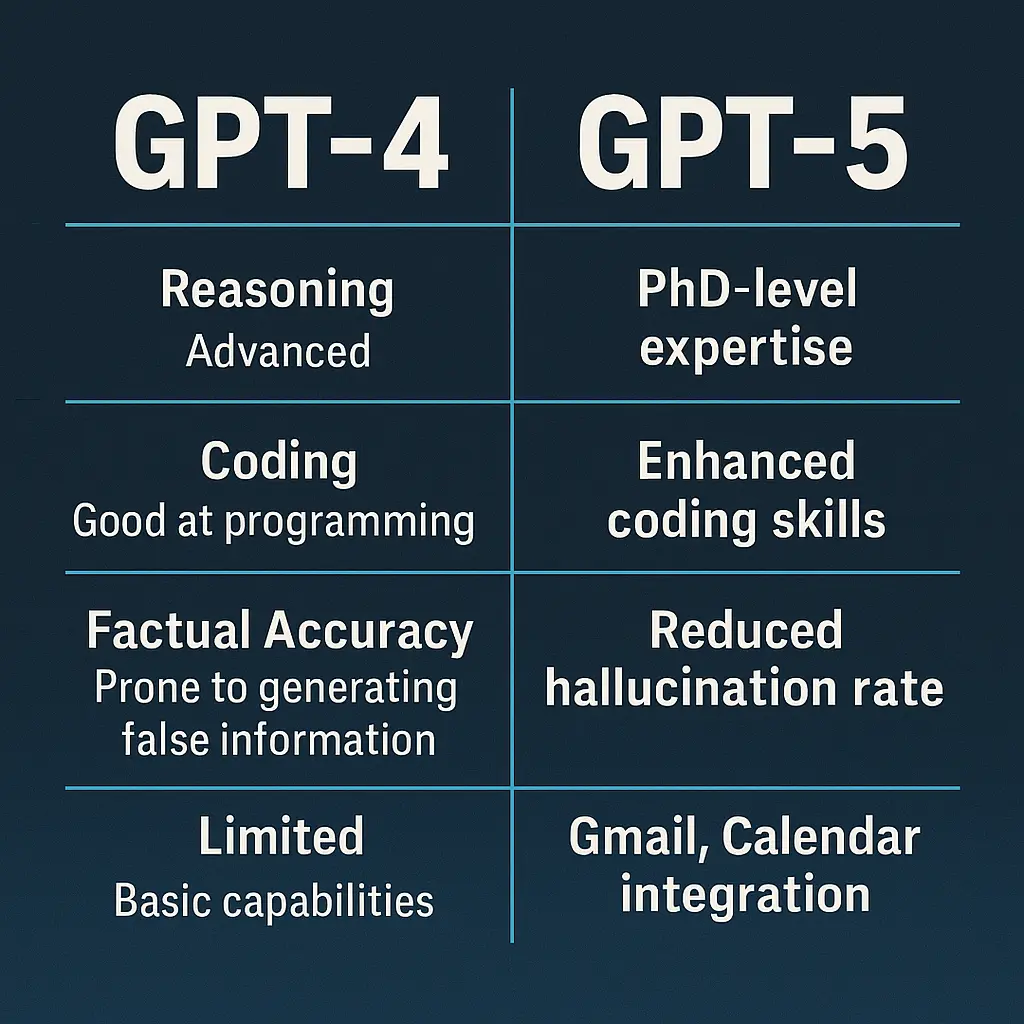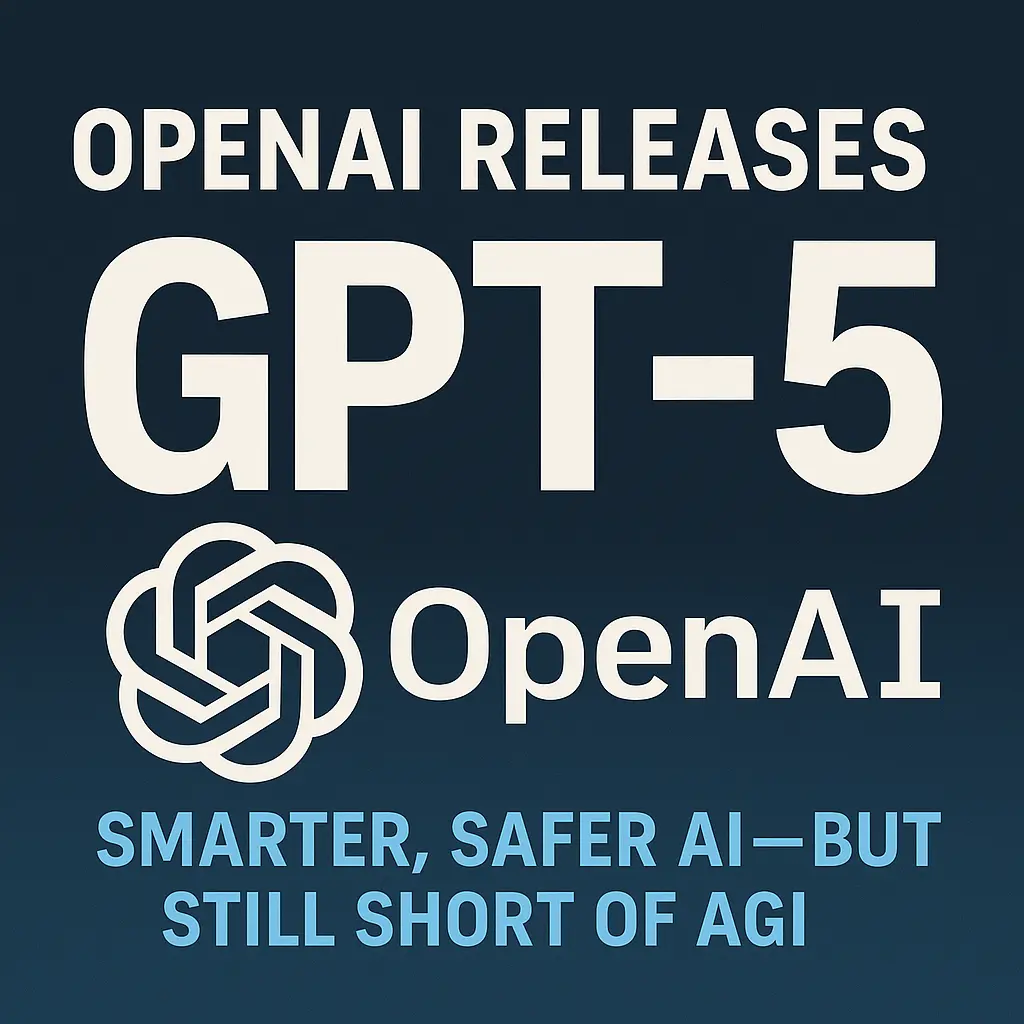On August 7, 2025, OpenAI officially rolled out GPT-5, calling it the most capable and reliable version of its language model to date. With over 700 million people using ChatGPT weekly, this release impacts more active users than many global social platforms. GPT-5 arrives with significant upgrades in reasoning, coding, creative writing, factual accuracy, and tool integration—yet still stops short of crossing into artificial general intelligence (AGI).
From Chatbot to “PhD-Level Expert”
OpenAI’s engineers describe GPT-5 as “a PhD-level expert in your pocket.”
Technically, the model benefits from several architectural refinements:
- Expanded parameter count (exact numbers remain undisclosed, but multiple independent researchers estimate it to be in the trillions) to better capture complex relationships between concepts.
- Hybrid training approach combining large-scale supervised learning, reinforcement learning from human feedback (RLHF), and multi-modal data streams for text, images, and code.
- Improved context window handling documents and conversations up to 256k tokens, enabling analysis of entire books or prolonged corporate project histories without breaking context.
- Enhanced reasoning chain tracking internally, the model better maintains logical coherence over multi-step problems, particularly in STEM and legal reasoning tasks.
- Reduced hallucination rate fine-tuned adversarial datasets have cut false factual assertions by an estimated 40% compared to GPT-4.
Integration With Your Digital Life
In a bid to make GPT-5 more of a digital co-pilot than a standalone chatbot, OpenAI has rolled out deep integrations:
- Gmail & Calendar: drafting and sending emails, scheduling events, summarizing threads.
- Google Drive & Microsoft Office: generating reports, auto-formatting documents, and extracting key metrics from spreadsheets.
- Code interpreter enhancements: improved debugging, multi-language refactoring, and secure execution sandboxing.
- Health-related advice features: not a substitute for medical professionals, but capable of flagging patterns (e.g., symptoms in daily logs) that may warrant a doctor’s visit.
These integrations rely on a secure OAuth-based system with strict user consent flows, an attempt to balance utility with privacy concerns.

Not Quite AGI
Despite the leap forward, GPT-5 still lacks continuous, autonomous learning—a hallmark of AGI. Once trained and deployed, its knowledge remains static, barring periodic updates. It cannot self-improve from user interactions beyond what OpenAI retrains in centralized updates.
Experts caution that while GPT-5 can emulate deep expertise, it does not possess true understanding or consciousness. It’s an extraordinary predictive model, not a thinking entity.
Massive Infrastructure & Business Push
GPT-5’s launch coincides with record-breaking capital and infrastructure expansion:
- $40 billion funding round earlier this year, led by multiple institutional investors.
- $12 billion CoreWeave partnership to secure cloud GPU capacity.
- Custom AI chip program in collaboration with Broadcom to reduce reliance on Nvidia.
- Global rollout through Microsoft Azure integration, giving enterprise customers instant GPT-5 access across Office 365 and Teams.
These moves signal OpenAI’s intent to dominate both the consumer and enterprise AI markets while securing supply chain independence.
The “Altman’s Pause” Debate
While the upgrade is undeniably powerful, some industry watchers have dubbed GPT-5 a symbol of slowed ambition. The Washington Post argues this could mark “Altman’s Pause”a deliberate moment where OpenAI focuses on refining existing capabilities and safety features rather than chasing the more unpredictable path to AGI.
This cautious approach could help maintain public trust and regulatory goodwill but may also leave the door open for competitors willing to push the boundaries faster.
Regulation, Ethics, and Trust
GPT-5’s expanded capabilities intensify ongoing debates over:
- Bias & fairness – OpenAI claims improved demographic bias mitigation, though external audits are ongoing.
- Data privacy – integration with personal accounts heightens scrutiny over how prompts and context data are stored.
- Regulatory alignment – GPT-5 was developed with input from policy groups to anticipate upcoming AI legislation in the EU, US, and Asia.
What’s Next?
Looking ahead, OpenAI is expected to roll out domain-specialized GPT-5 variants for legal research, biotech, and education. Some analysts predict a multi-agent architecture in GPT-6, where smaller specialized models collaborate in real time.
For now, GPT-5 represents a significant, polished step forward—a more knowledgeable, context-aware, and safer AI companion. But the race to AGI remains unfinished, and the next few years will determine whether this measured approach pays off or if the industry’s fastest movers leave OpenAI behind.

